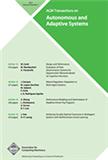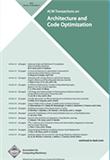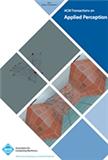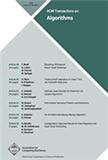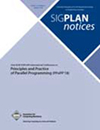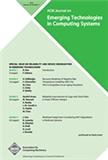NEW GENERATION COMPUTING
SCIE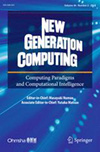
- 雜志名稱:新一代計算
- 簡稱:NEW GENERAT COMPUT
- 期刊ISSN:0288-3635
- 大類研究方向:工程技術
- 影響因子:0.833
- 數據庫類型:SCIE
- 是否OA:No
- 出版地:JAPAN
- 年文章數:19
- 小類研究方向:工程技術-計算機:硬件
- 審稿速度:>12周,或約稿
- 平均錄用比例:容易
官方網站:http://www.springer.com/computer/ai/journal/354
投稿網址:http://www.ohmsha.co.jp/ngc/instruction.htm
NEW GENERATION COMPUTING
英文簡介The journal is specially intended to support the development of new computational and cognitive paradigms stemming from the cross-fertilization of various research fields. These fields include, but are not limited to, programming (logic, constraint, functional, object-oriented), distributed/parallel computing, knowledge-based systems, agent-oriented systems, and cognitive aspects of human embodied knowledge. It also encourages theoretical and/or practical papers concerning all types of learning, knowledge discovery, evolutionary mechanisms, human cognition and learning, and emergent systems that can lead to key technologies enabling us to build more complex and intelligent systems. The editorial board hopes that New Generation Computing will work as a catalyst among active researchers with broad interests by ensuring a smooth publication process.Areas covered in New Generation Computing include:Learning: Foundations and Models of Learning, Computational Learning Theory, Grammatical Inference, Inductive Logic Programming, Statistical Learning Methods, Bayesian Networks, Reinforcement LearningData Mining: Frequent pattern mining, Stream Data Mining, Graph and Network mining, Relational Data Mining, Text and Web Mining, Statistical methods for Data Mining, Machine learning methods for Data Mining, Visualization methods for Data MiningCognitive Computing: Modeling Human Knowledge, Modeling Human Problem Solving and Learning, Semantic Computing, Modeling and Analyzing Decision Making, Cognitive Architecture, Artificial General Intelligence, Human Level AI.Programming and Semantics: Foundations and Models of Computation, Computational Logic, Programming Systems, Declarative Programming, Concurrency and Parallelism, Quantum Computing.Control Theory of Bio- and Nano-systems: Formal Models of Molecular Systems, Computation by Token-based Systems, Non-Boolean Representations of Signals in Nature, Cellular Automata Based on Mechanisms Found in Nature.Bio/Nano/Molecular Computing and Engineering: Molecular Robotics & Artificial Cells, DNA Nanoengineering, Molecular Computing/Programming, Self-organizing Systems.Skill Science and Philosophy: Skills and Knowledge in Life, Communication and Social Skills, Learning of Embodied Skills and Knowledge, “Kansei" and Value Creation, Sports Science, Measurement and Analysis of Body Movements, Systems Theory of Body, Cognitive Approach of Skill Science, Subjective Verbalization of Proprioceptive Sense, Co-evolution of Body and Language, Symbol Grounding, Symbol GenerationComputational Social Science: Social Media, Web Services, Web Mining, Social Studies, Semantic Web, Crowdsourcing, Social Systems, Social Simulation, Virtual Lab
NEW GENERATION COMPUTING
中文簡介本雜志旨在支持各種研究領域交叉施肥產生的新的計算和認知范式的發展。這些領域包括但不限于編程(邏輯、約束、功能、面向對象)、分布式/并行計算、基于知識的系統、面向代理的系統以及人類具體知識的認知方面。它還鼓勵有關所有類型的學習、知識發現、進化機制、人類認知和學習的理論和/或實踐論文,以及能夠引導我們構建更復雜和智能系統的關鍵技術的新興系統。編委會希望新一代的計算技術能夠通過確保出版過程的順利進行,在具有廣泛興趣的活躍研究人員中起到催化劑的作用。新一代計算涉及的領域包括:學習:學習的基礎和模型,計算學習理論,語法推理,歸納邏輯編程,統計學習方法,貝葉斯網絡,強化學習數據挖掘:頻繁模式挖掘、流數據挖掘、圖形和網絡挖掘、關系數據挖掘、文本和Web挖掘、數據挖掘的統計方法、數據挖掘的機器學習方法、數據挖掘的可視化方法。認知計算:建模人類知識、建模人類問題解決與學習、語義計算、建模與分析決策、認知架構、人工通用智能、人級人工智能。編程和語義:計算的基礎和模型,計算邏輯,編程系統,聲明式編程,并發和并行,量子計算。生物和納米系統的控制理論:分子系統的形式模型,基于令牌系統的計算,自然界中信號的非布爾表示,基于自然界中發現的機制的細胞自動機。生物/納米/分子計算與工程:分子機器人與人工細胞、DNA納米工程、分子計算/編程、自組織系統。技能科學與哲學:生活中的技能與知識、交流與社會技能、身技能與知識的學習、“感性”與價值創造、體育科學、身體運動的測量與分析、身體系統論、技能科學的認知方法、本體感覺的主觀言語化、共同進化身體和語言的n,符號接地,符號生成計算社會科學:社會媒體、網絡服務、網絡挖掘、社會研究、語義網絡、眾包、社會系統、社會模擬、虛擬實驗室
精選同類領域期刊,熱門推薦輕松get~
-
- ACM Transactions on Autonomous and Adaptive Systems
- 期刊ISSN:1556-4665
- 大類研究方向:工程技術
- 影響因子:
- 數據庫類型:SCIE
- 咨詢投稿
-
- ACM Transactions on Architecture and Code Optimization
- 期刊ISSN:1544-3566
- 大類研究方向:工程技術
- 影響因子:1.444
- 數據庫類型:SCIE
- 咨詢投稿
-
- ACM Transactions on Applied Perception
- 期刊ISSN:1544-3558
- 大類研究方向:工程技術
- 影響因子:
- 數據庫類型:SCIE
- 咨詢投稿
-
- ACM Transactions on Algorithms
- 期刊ISSN:1549-6325
- 大類研究方向:工程技術
- 影響因子:
- 數據庫類型:SCIE
- 咨詢投稿
-
- ACM SIGPLAN NOTICES
- 期刊ISSN:0362-1340
- 大類研究方向:工程技術
- 影響因子:
- 數據庫類型:
- 咨詢投稿
-
- ACM Journal on Emerging Technologies in Computing Systems
- 期刊ISSN:1550-4832
- 大類研究方向:工程技術
- 影響因子:2.013
- 數據庫類型:SCIE
- 咨詢投稿
精選常見問題,答疑解惑輕松get~
- 三篇ssci論文怎么同時投出去
- 中文核心和sci哪個影響力更大
- 中科院一區和JCR一區期刊占比區別
- 發ssci如何快速找合適的期刊
- 資源保護方面論文投sci指導
- 外貿行業論文發ssci周期長嗎
- 國外的sci投到錄用一般多久
- ssci期刊國內認可度
- 核能應用論文翻譯英文發sci容易的方法
- 人口老齡化研究論文符合ssci領域嗎
- sci開源和不開源分別是什么意思?有什么影響?
- ssci發表是高水平學術論文嗎
- 生態修復主題英文論文會收錄哪些數據庫
- 哲學專業論文發英文期刊
- 中科院sci四個區的劃分
- ssci期刊和sci期刊的區別
- ESCI和SCIE要分清
- ssci送審論文多久出結果
- ssci論文二作有用嗎
- 水土保持類英文期刊好選嗎
- ssci期刊論文一定會檢索嗎
 投稿咨詢
投稿咨詢

